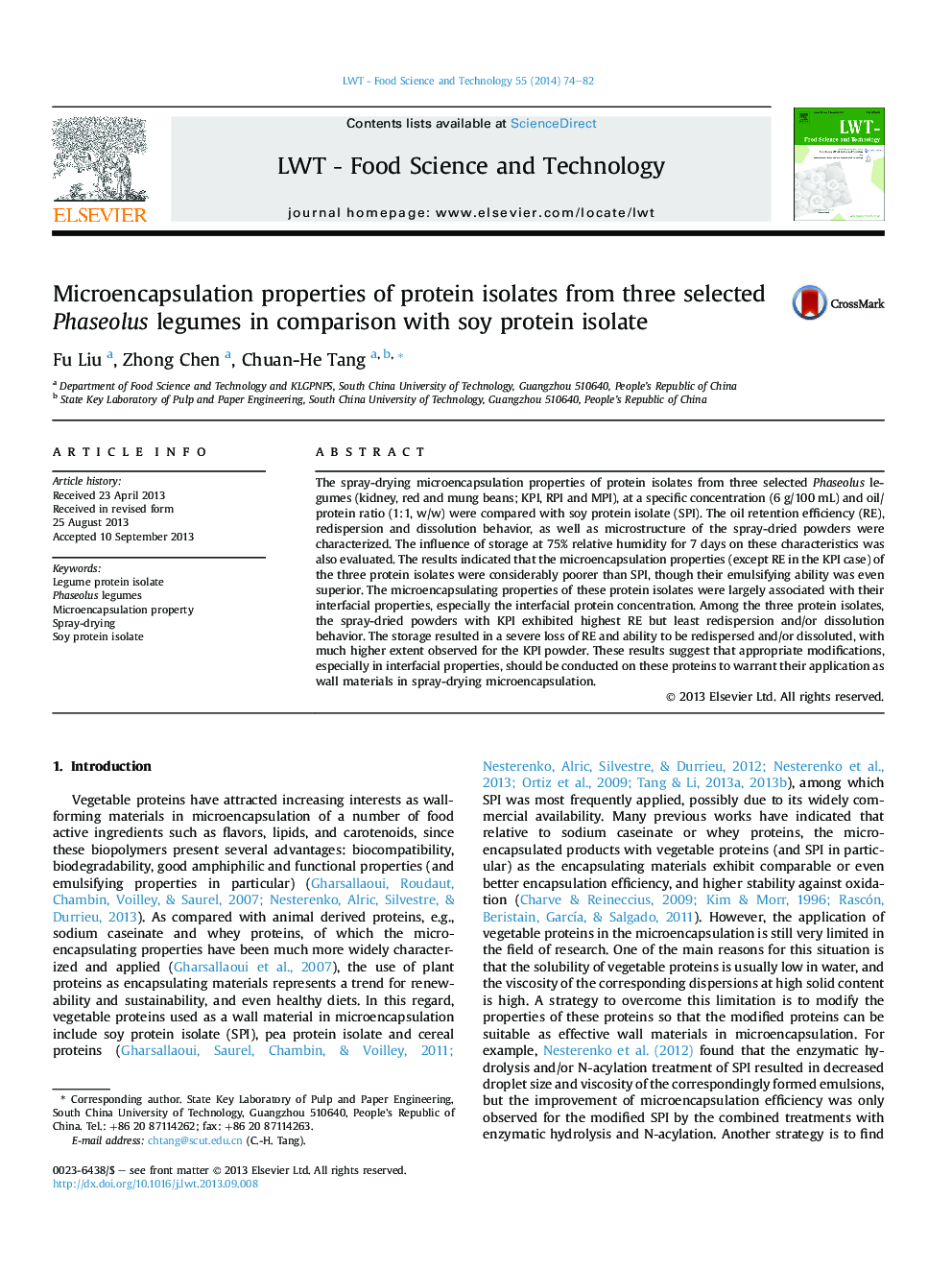| Article ID | Journal | Published Year | Pages | File Type |
|---|---|---|---|---|
| 6403861 | LWT - Food Science and Technology | 2014 | 9 Pages |
â¢The microencapsulating potential of three legume protein isolates was evaluated.â¢The interfacial properties varied with the type of the protein isolates.â¢The microencapsulation properties were basically poorer than soy protein isolate.â¢The microencapsulation efficiency was closely related to the interfacial property.
The spray-drying microencapsulation properties of protein isolates from three selected Phaseolus legumes (kidney, red and mung beans; KPI, RPI and MPI), at a specific concentration (6Â g/100Â mL) and oil/protein ratio (1:1, w/w) were compared with soy protein isolate (SPI). The oil retention efficiency (RE), redispersion and dissolution behavior, as well as microstructure of the spray-dried powders were characterized. The influence of storage at 75% relative humidity for 7 days on these characteristics was also evaluated. The results indicated that the microencapsulation properties (except RE in the KPI case) of the three protein isolates were considerably poorer than SPI, though their emulsifying ability was even superior. The microencapsulating properties of these protein isolates were largely associated with their interfacial properties, especially the interfacial protein concentration. Among the three protein isolates, the spray-dried powders with KPI exhibited highest RE but least redispersion and/or dissolution behavior. The storage resulted in a severe loss of RE and ability to be redispersed and/or dissoluted, with much higher extent observed for the KPI powder. These results suggest that appropriate modifications, especially in interfacial properties, should be conducted on these proteins to warrant their application as wall materials in spray-drying microencapsulation.
